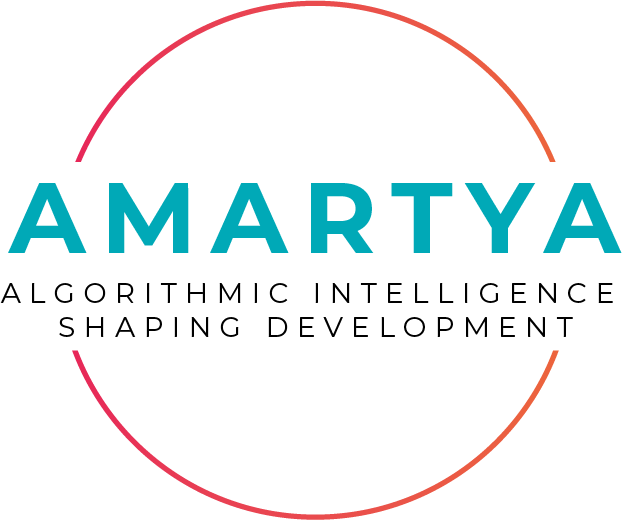Amartya
The territorial planning algorithm to shape the development

Amartya
An algorithm that plans and evaluates public politics
Amartya is a Digital Twin designed by the Emilia-Romagna Region to predict the effects of macroeconomic shocks and to simulate the effects of public politics on the financial and economic conditions of businesses and families in our territory.
Amartya creates a digital duplicate of the regional population and enterprises that are spread on the territory in order to evaluate, thanks to ad hoc micro-simulation models, the effects on profitability and financial stability of enterprises and the redistributive, employment and welfare effects of regional and national policies on households, on a multidimensional analysis point of view.
This project integrates the rich amount of data owned by the Emilia-Romagna Region with the calculation efficiency of MarghERita, the regional supercomputer. Amartya was developed in collaboration with Bologna and Modena-Reggio Emilia Universities and in perspective with Ferrara and Parma Universities.
Amartya already allows to simulate the impact of eight tax benefit measures and to obtain a detailed vision of redistributive and behavioral effects on the Emilia-Romagna population. Moreover, with a time depth of ten years, this model allows to analyze the performances and the corporate risks for every geographic area and industry sector. Amartya represents a significant step forward in spatial planning and in the financial and economic evaluation of public policies, outlining to decision-makers a more sustainable and equitable shape of development for Emilia-Romagna.
The phases of the Project
from the micro-simulation to the statistical model, also exploiting macro and micro economic multipliers, which are static and linear at the moment, to evaluate the impact of public spending
The population’s Digital Twin
A digital copy of every family that lives in one of the 330 municipalities of Emilia-Romagna (around 4,5 million people), simulates the tax-benefit effects of regional and local systems
The productive fabric
The microsimulation model integrates companies with registered office and/or operating headquarters in Emilia-Romagna, to which is added a clustering of companies by sector and supply chain
The statistical model
This model will link the exogenous variables trends (conjunctural, demographic, industrial, macroeconomic, tourist, meteorological data) with the trend of the economic-financial performances of enterprises and families.
The micro-simulation model
Amartya’s microsimulation tax-benefit model values the impact of taxes and transfers resulting from public policy measures, on the distribution of household incomes and on companies present in the territory, as well as the effects of major external macroeconomic shocks on the population (inflation, prices of certain raw materials, interest rates, etc.)
For instance, this model allows to evaluate:
- the behavioral effects of individuals and families for possible applications on the school-work-home mobility, demographic and environmental transaction, etc.
- the effects on companies with registered office and/or operating headquarters in Emilia-Romagna with a temporal depth of ten years (2013-2022)
The measures already simulated by Amartya
8 measures were considered by the model: seven regional measures (care allowance for the elderly/disabled; contribution towards the rent; contribution towards nursery tuition; contribution towards summer camps and books; contribution towards electric bicycles; sustain to public transport for under 18 people – “Salta su”) and one national measure (inclusion allowance).
The impact of these politics is represented by a dashboard that integrates families and enterprises.
On this dashboard it’s possible to evaluate the impact of every measure and change more variables that constitute the assumptions at the same time.
